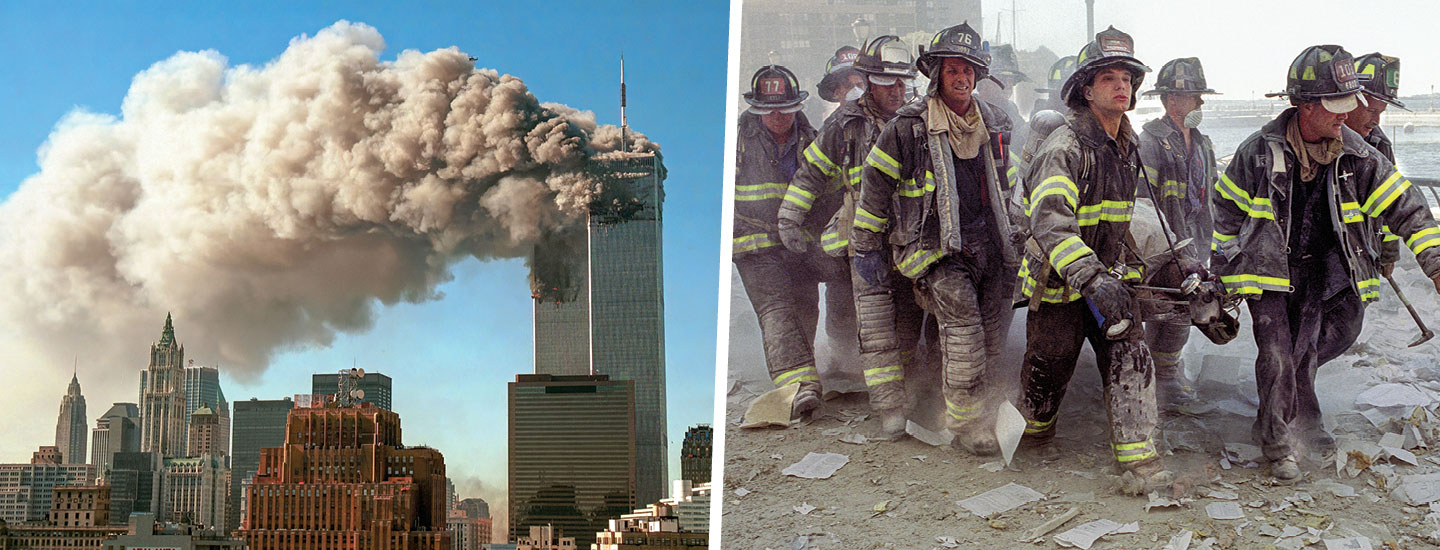I felt so far from home and so scared. Nobody knew what to do. Nobody had experienced anything like this before.
At about 10:00, we’re standing about five or six blocks away, and all of a sudden, the South Tower starts to collapse. It just crumbled down and you see a white cloud.
A few minutes later, the cloud gets to us and you can’t see anything. You try to open your eyes, but you can’t see. You just hear people yelling and screaming. Eventually you can see again—and there is white soot everywhere. That’s when we decided it was time to go home. After we started walking, the other tower fell.
There were no trains running, no buses. All the roads were closed. No cell phones worked. The closest cell tower fell when the buildings collapsed. But strangers were helping each other. People were scared and disoriented. But some would say, “Where do you live? Follow me, I’ll help you.”
I walked across the Brooklyn Bridge with two people who were strangers to me. I heard them talking about walking to Brooklyn, and I asked if I could walk with them. We comforted each other and walked home with each other and got each other through that experience.
Around noon, after hours of walking, I was finally able to use a pay phone to call home and tell my family I was alive. Then someone gave me a ride to my street. I was so happy to be home, I ran so fast.
All of my family and friends were there to see that I was OK. They cried, I cried, it was very emotional. They hadn’t heard from me for a long time after the buildings were already gone. And I didn’t know if I would ever see my family again.
Some people lost everything that day. I was lucky. I lived.

